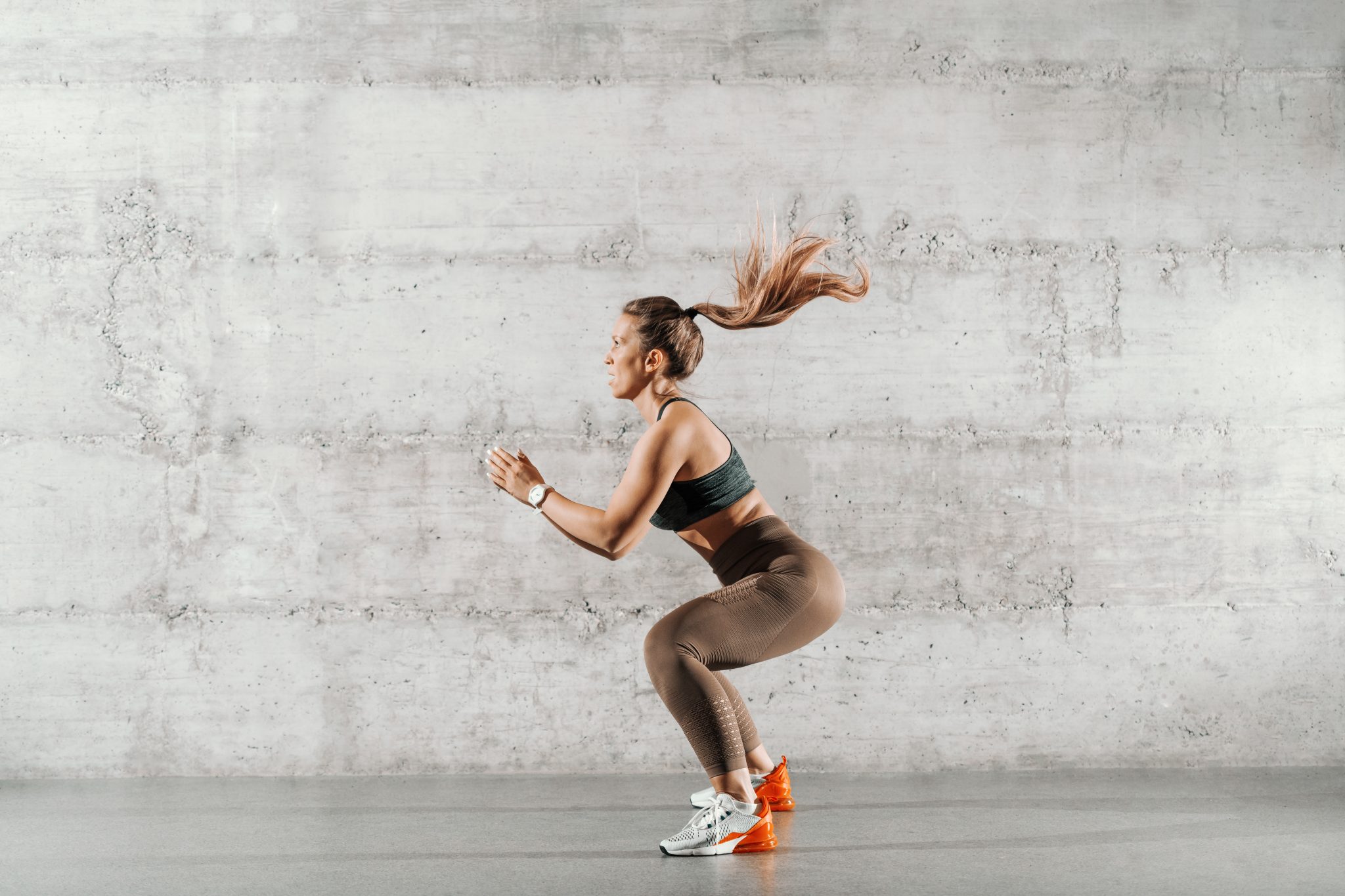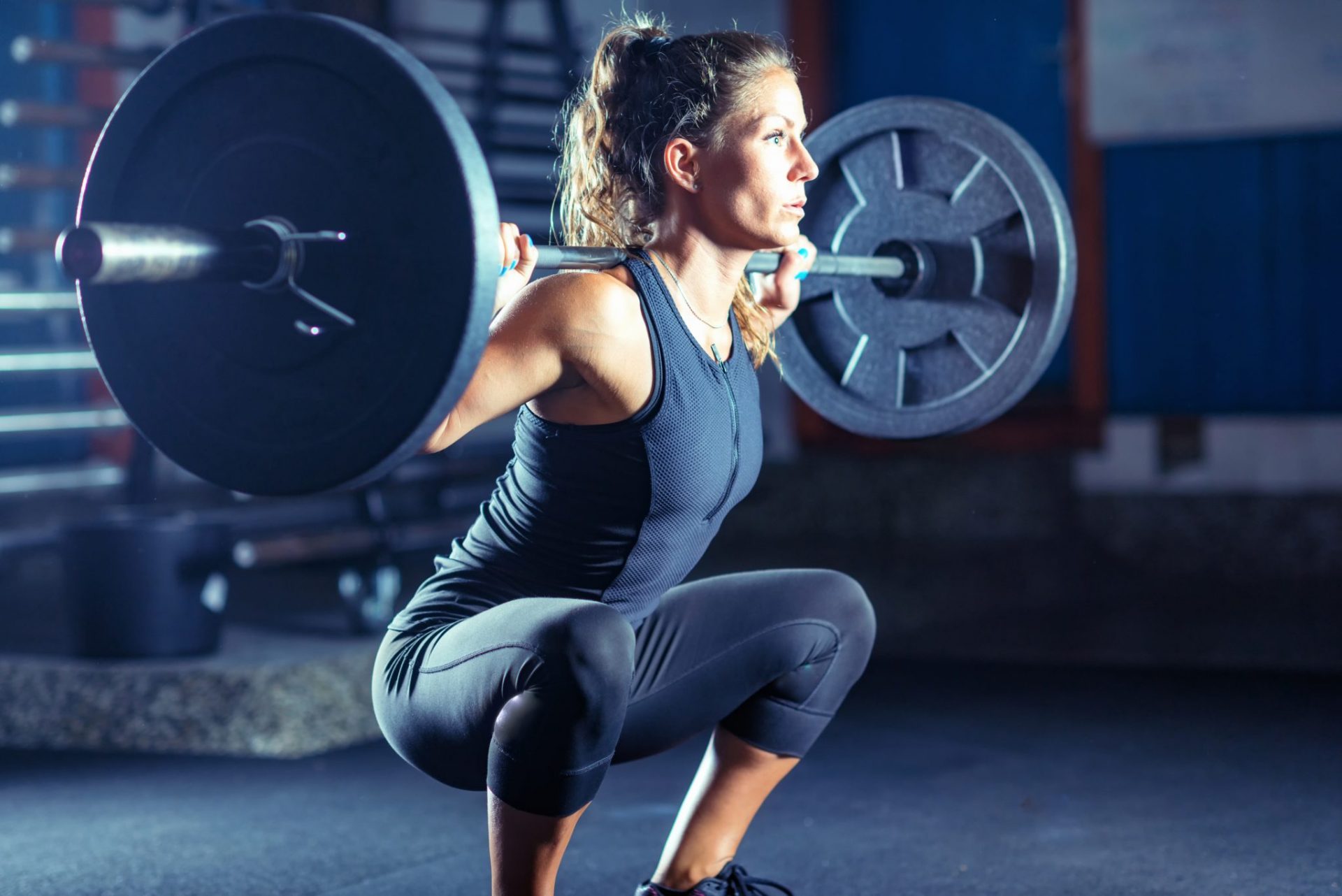It’s the move you need to build a strong lower body, and the good news is you can do it anywhere without any equipment. Here’s how perfect the bodyweight squat.
It’s the exercise you see every influencer doing to build a strong lower body. For good reason – squats are a brilliant exercise for building your glutes, quads and hamstrings, working your ankles and activating your core. They provide the perfect workout combination of strength, balance and mobility: the holy trinity of fitness goals.
You can add weight to your squats to increase the challenge or just utilise your body weight. The key is to maintain good form; there’s no point in speed squatting or lifting heavy if you’re not in the perfect position because you won’t be targetting the right muscles.
Don’t be fooled into thinking that you should race through your squats, just because it might feel easy without any weights. Slow and steady wins the race. The work is on the descent and increasing the time your muscles spend under tension is where the magic happens.

Which muscles am I working?
Squats may target the thighs but they’re also incredible for core strength, stability and ankle mobility – all crucial elements of functional, everyday fitness. Whether you’re lifting a heavy piece of furniture (strength) or bending to inspect something on the ground (flexibility), you should be squatting to avoid injuries.
When you squat, you’re working:
- Quadriceps (front of thighs)
- Hamstrings (back of thighs)
- Glutes (bum)
- Adductor magnus (inner thigh)
- Erectors (spine)
- Abs and obliques (centre and side stomach)
- Calves
- Upper back and lats (shoulders – if you’re using weights)
How to do the perfect squat
1. Stand with your feet shoulder-width apart
2. Push your weight back into your heels – you should be able to lift up your toes
3. Slightly bend your knees and put your arms out straight in front of you for balance
4. Sit back as if going to sit in an invisible chair – keep your back straight and legs at a 90º angle (if you can – if not, try to go as low as you can without your knees turning outwards)
5. Keep your knees behind your toes and push back up to stand
You may also like
The best squat variations for glutes, quads, hips and endurance
Points to remember
Slow it down
Count to three as you bend down and then come back up to standing quickly.
Squatting is all about the angles
Eventually, you want to form a 90º angle between your thighs and calves.
Keep your knees behind your toes
Weight should be back in your heels at all times.
Keep your knees facing forwards
You don’t want them to face out to the sides but keep everything aligned.
Look forward
Looking at the ground is only going to result in a curved back and pressure on the neck.

Variations
Goblet squat
Take a kettlebell or dumbbell (you want it to be quite heavy) and hold it to your chest.
Keep the weight there while you perform your classic squats – remembering to keep the weight in your heels even if you are holding it in your arms.
Barbell squat
If you’ve never done a barbell squat before, it’s worth getting a PT at your gym to watch and guide you through your first one. Lifting heavy requires having someone close by to ‘spot’ you and ensure that you don’t drop a massive load on your feet/back/head. The format follows the same principle but instead of holding your weight, you load your barbell up and squat with it resting on the bottom of your neck.
Squat and walk
Weighted or not, simply squat and instead of coming back up to standing immediately, step forwards with your right foot then move your left foot, then step back and stand up.
Squat, step forwards, step backward, stand.
Sumo squat
This is a wider squat than the regular. Rather than having your feet shoulders’ width apart, move them so that they’re a few inches wider than a yoga mat and then bend. Eventually, you should be able to rest your elbows on the insides of your knees – increasing the stretch.
Yogis can hang out in this position for long periods of time so start short (10 seconds) and build up to see how long you can hold a sumo squat (30 seconds +).
Squat jump
If you really want to feel the burn, squat and then jump as you come back up – taking care to land softly and with bent knees to protect your joints. Use your arms to help take you up, moving them back as you come up.
You may also like
Squats: what muscles do squats work and why they're the best lower body exercise
Should you do 10, 100 or 1,000 squats a day?
The 100 squat challenge has been doing the rounds on social media for ages. While it’s not a bad thing to give a go, it’s not worth embarking on if you’re banking on it providing strength or muscle, which require lower rep ranges and heavier weights to achieve. Meanwhile, doing 1,000 squats a day is not only unsustainable but will also just overwork the same muscles for very little reward.
As always, work out to feel good and get strong. The best strength gains are made from exercising efficiently – not excessively.
Follow @StrongWomenUK on Instagram for the latest workouts, delicious recipes and motivation from your favourite fitness experts.
Images: Getty
Source: Read Full Article
